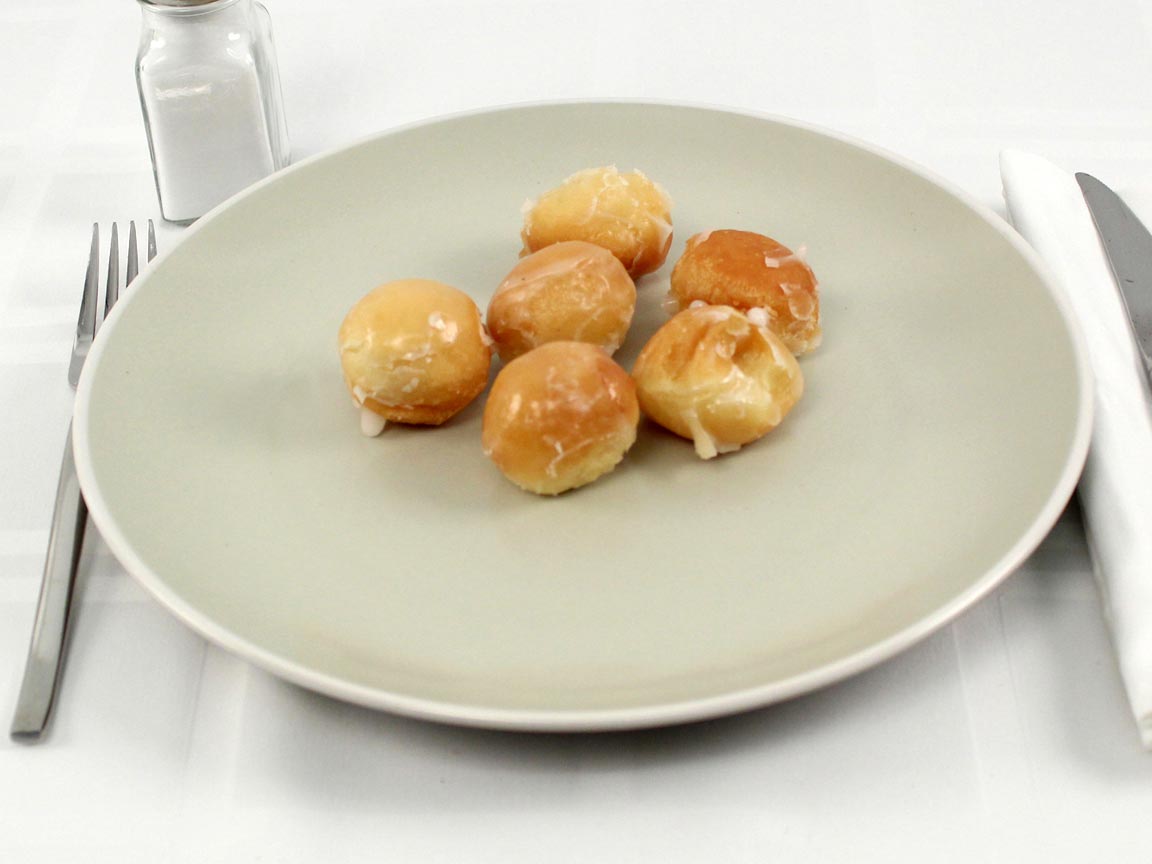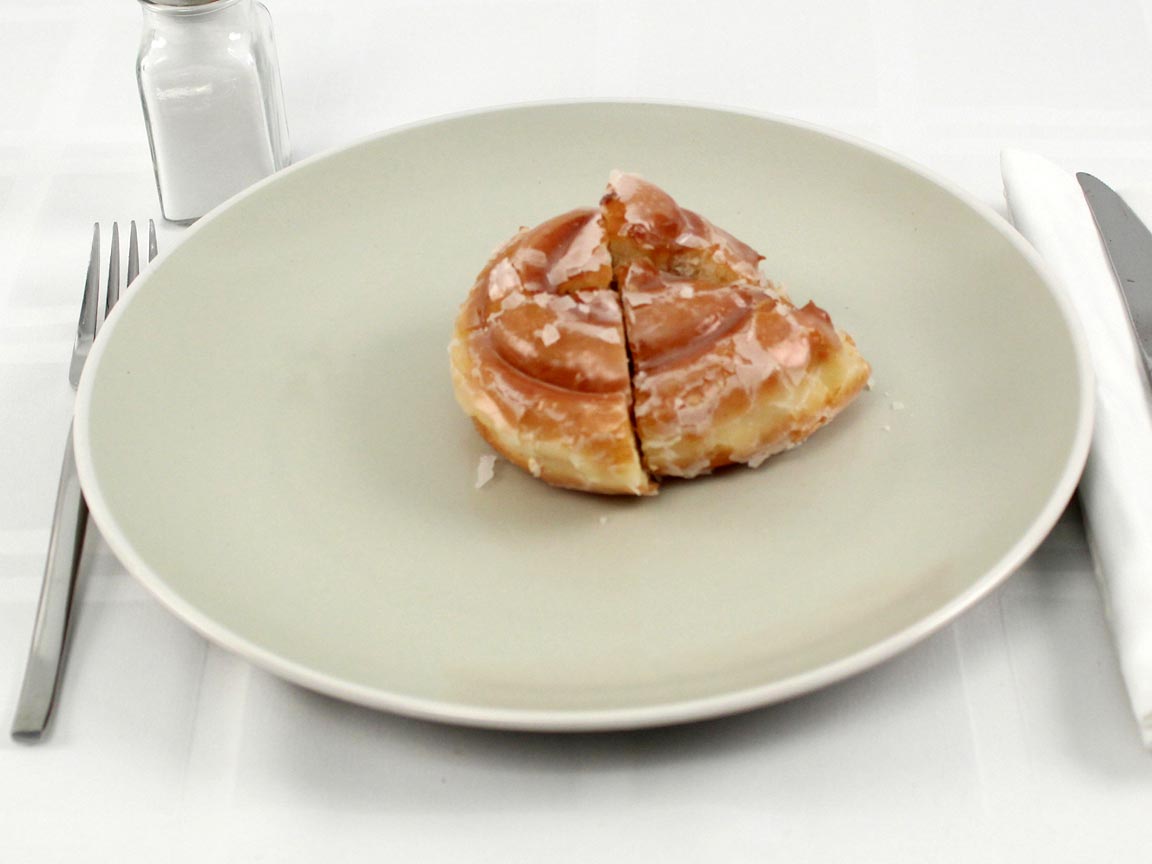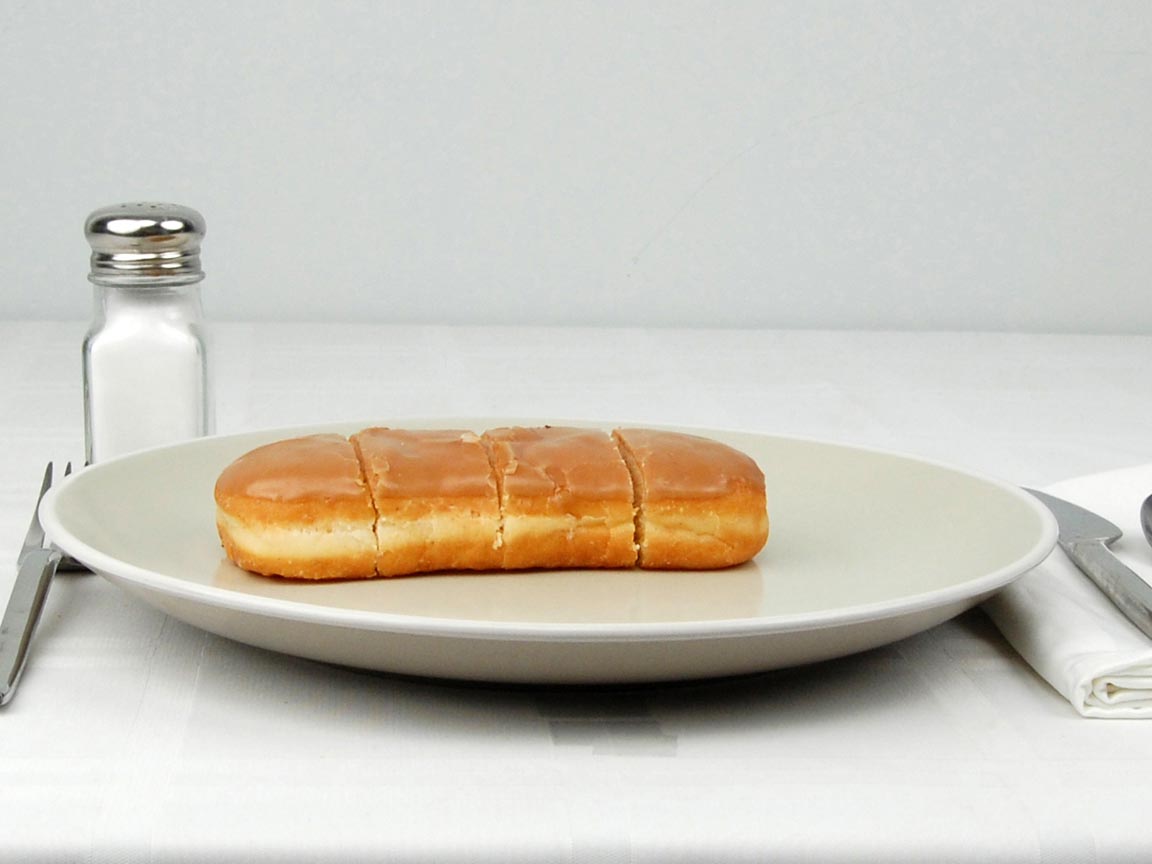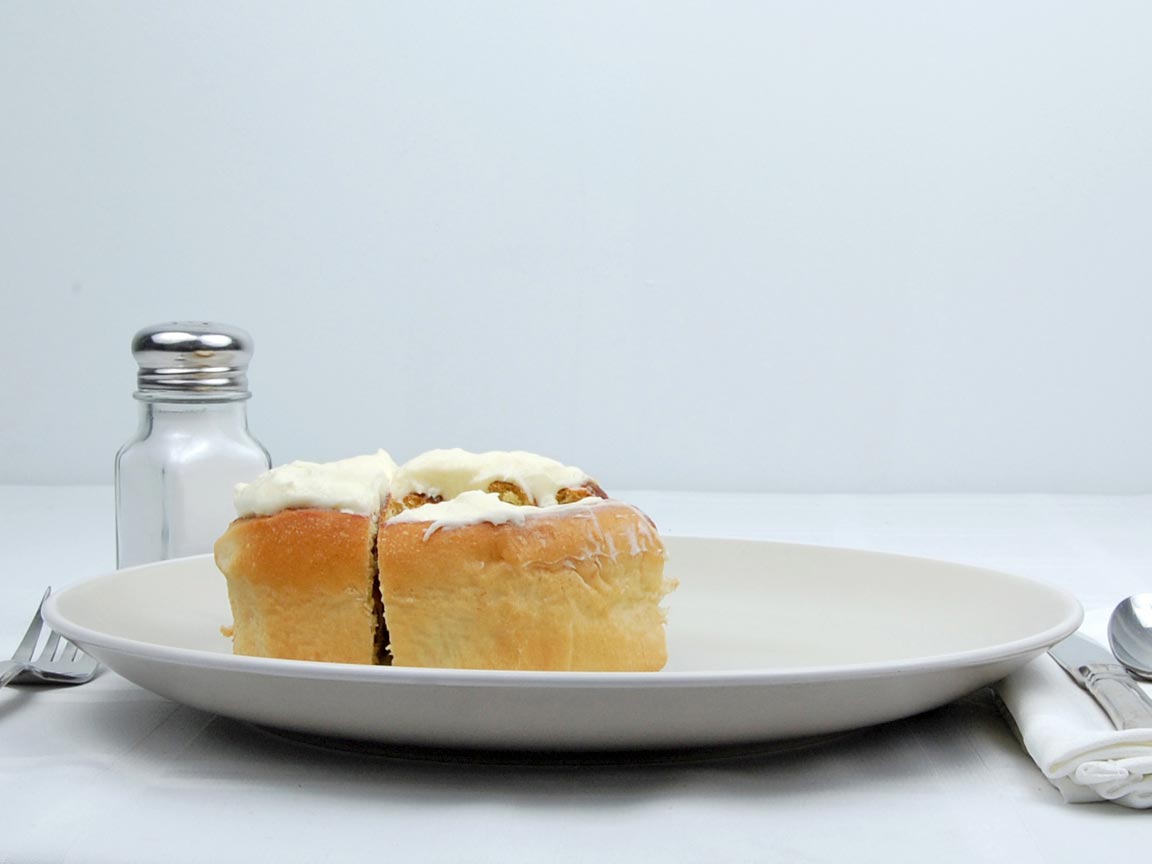588 calories
Serving Size 5 oz (about 142 g)
There is no photo available for this food item however it should be similar in terms of nutritional content and calorie density as the following items. You can use these for references.
(100% similar)

Glazed Donut Holes
(98% similar)

Glazed Donut
(99% similar)

Cinnamon Roll Donut
(99% similar)

Donut - Maple Bar
(98% similar)

Plain Donut
(98% similar)

Cinnamon Roll
Serving Size 5 oz (about 142 g)
| Amount Per Serving | ||
|---|---|---|
| Calories 588 | Calories from Fat 289 | |
| % Daily Value* | ||
|
Total Fat
32 |
49 |
|
|
Saturated Fat
13 |
65 |
|
|
Trans Fat
0 |
||
|
Cholesterol
42 |
14 |
|
|
Sodium
447 |
19 |
|
|
Total Carbohydrate
67 |
22 |
|
|
Dietary Fiber
2 |
8 |
|
|
Sugars
32 |
||
|
Protein
8 |
||
* Percent Daily Values are based on a 2,000 calorie diet. Your daily values may be higher or lower depending on your calorie needs.
Available portions
Food analysis
High Sodium
Junk Food
High In Sugar
Bad Fat Source
High Calorie Density
There is 588 calories in 142 grams of Doughnuts, yeast.
With 410 calories per 100 grams, this food would be considered a High calorie density food.
Be carefull, High calorie density food tends to add up calories quickly and you should be carefull with your portion size if you are trying to lose weight.
Doughnuts, yeast is High in carbohydrates, Low in proteins and High in fats. You can look at the macronutrients graph below for a detailed ratio.
This item has High quantity of carbohydrates and fats. This combinasion is usually indicating that you should stay away from this food labeled as "Junk Food".
With 45 grams of "Net carbohydrates" per 100 grams,
it not safe to consume if you are following a Keto or Ketosis diet.
Related Searches
doughnuts
yeast-leavened
glazed
enriched
includes
honey
buns
donut
Macronutrients split
45.9% Carbohydrates
48.3% Fats
Nutrients and how much we eat of it play an important role on our health and body composition. To learn more on theses, check our blog posts on Proteins, Carbohydrates and Fats.